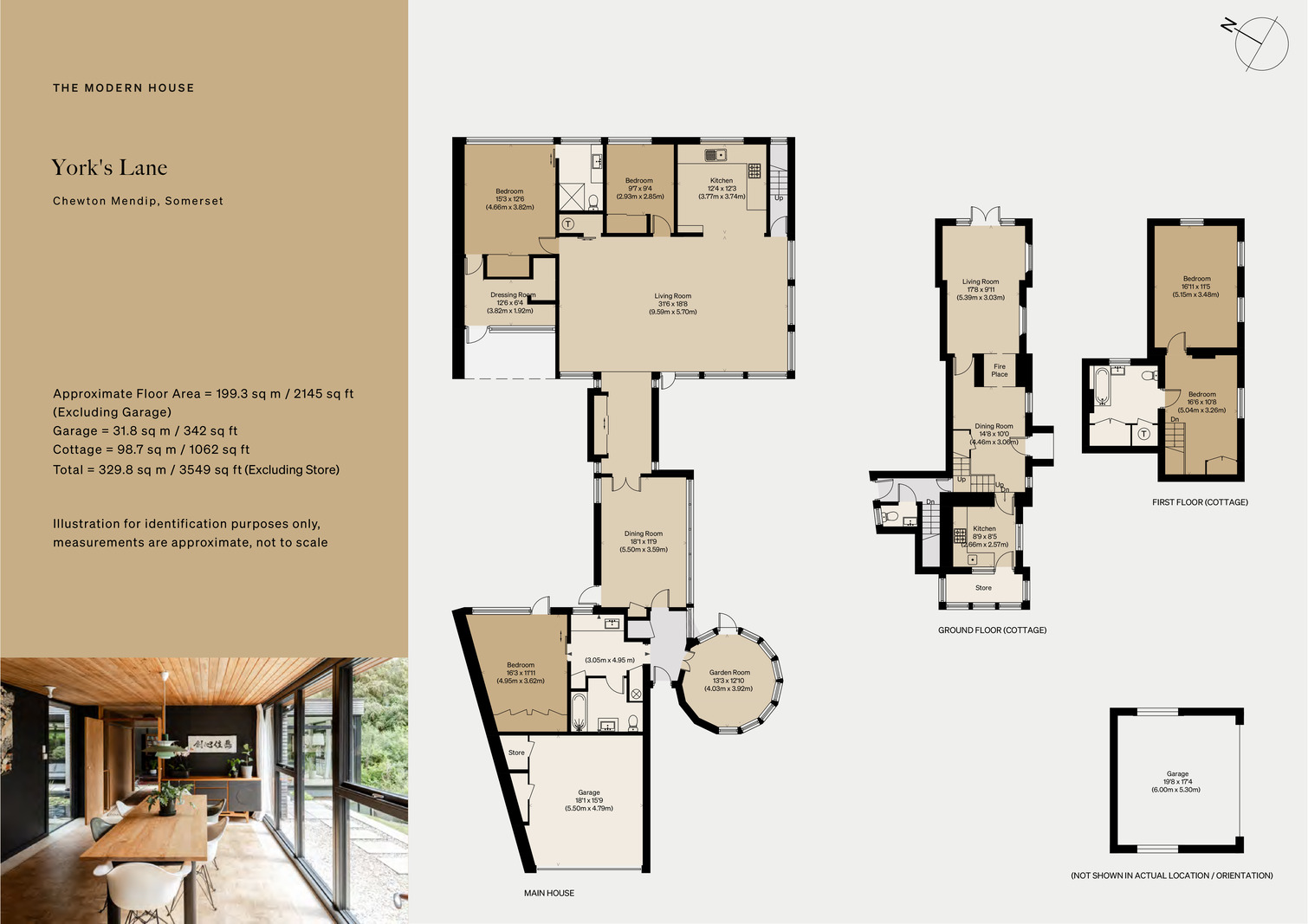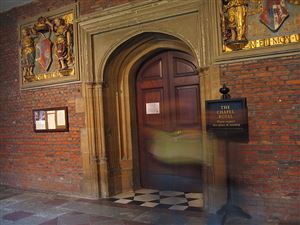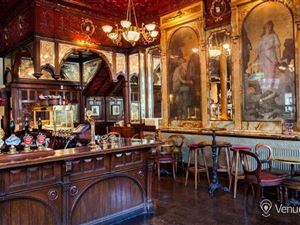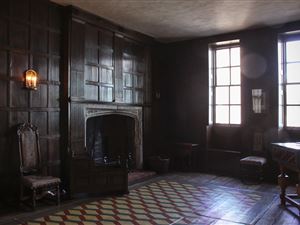5 bed detached house for sale York's Lane, Chewton Mendip, Somerset BA3
£1,895,000 Letting fees
Key info
- Status: For sale
- Type: Detached house
- Bedrooms: 5
- Bathrooms: 4
- Area: Chewton Mendip, Radstock, Bath & N E Somerset
Price changes
| £1,895,000 | 12 days ago |
Full description
This remarkable modernist home is set in Somerset’s idyllic Mendip Hills National Landscape. Designed by acclaimed architect Ray Moxley in the 1960s, it was later extended by Robert and Tim Organ. It was the subject of a major renovation by its current owners, who sympathetically restored its original architectural features; the interior remains a showcase of mid-century features and period detailing. Its 3,200 sq ft of space is divided between a main single-storey house and a two-bedroom stone cottage that can be used as either one or two houses. Beautifully landscaped internal courtyards and surrounding gardens of around half an acre are set in harmonious equilibrium with the rural environment beyond. While the immediate location is private, the house is just two miles Chewton Mendip and four miles from Wells, with Bruton, Frome and Mells also reachable in around 30 minutes by car.Watch our film about York's Lane here.The ArchitectsRay Moxley was, at the time of the house’s commission, a young forward-thinking architect based in Bristol. His success in this field brought in many commissions, including Chelsea Harbour, a huge site adjacent to Lots Road Power Station, where he worked with Chamberlin, Powell and Bon (the trio behind the Barbican Estate) and Woods.The Organ brothers, Bob and Tim, were widely celebrated when the house was built, completing a small but highly distinctive number of projects before going their separate ways. It is the expressiveness of their designs and the daring forms of their buildings that demarcate the Organ brothers from their contemporaries; almost sculptural in appearance, their houses, schools and apartment blocks (among other designs) still seem radical to this day. For more information, see the History section below.The TourThe location feels incredibly quiet and secluded, tucked away along a quiet country lane opposite woodland on the Waldegrave Estate. A winding private driveway leads to the primary entrance, which is set discreetly on the westerly side.The main house, constructed of timber frame, concrete block and stone, consists largely of a rectangular structure with floor-to-ceiling glazing that is strongly reminiscent of the celebrated Case Study houses built in California in the 1950s.A beautifully light entrance hall leads through to a distinct tetradecagon-shaped garden room to the immediate right. This is a wonderfully warm pocket of the house: A naturally inviting space to sit and read, enjoy music or admire the light and space. Strategically placed ribbons of glazing frame key views of the woodland, and a wonderful quality of light filters in from different angles at various points of the day.To the left of the entrance hall is a quiet sleeping area with a private en suite bathroom, ideally reconfigured to provide a private resting space for guests, set independently from the rest of the house. Glass doors provide natural light, as well as calming views of plants, trees, and water, and open up the space, allowing an easy flow onto the courtyard gardens.The dining room connects the westerly wing of the house to the spectacular central living areas, the open plan living space elegantly cantilevering over the hillside. Glass walls invite striking natural light into the space while framing breathtaking snapshots of layer-upon-layer of woodland. Designed to be versatile in its layout and adaptable to season, mood, and occasion, the room is defined by free-standing furniture pieces which afford more appropriate, flexible divisions of space than the permanence of walls or corridors. In winter months, the room is reconfigured towards a large wood-burning stove set upon a cast concrete plinth, which transforms the room into a comforting, cosy retreat.The new kitchen feels perfectly in keeping with the mid-century interior aesthetic while retaining a generous provision of space for cooking and food preparation. Clean lines of bespoke cabinetry create plenty of storage and neatly conceal the appliances.Tucked into the north-easterly corner, the main bedroom is an incredibly quiet and peaceful room, with an en suite bathroom and generous walk-in wardrobe. The third bedroom lies adjacent, with leafy views across the gardens and over treetops.The original cottage is connected by an adjoining internal staircase, which can be closed for privacy via a doorway on both sides. Built of stone and concrete block, the house dates to the 1700s and the interior has been sensitively updated while retaining many of the charming original features such as flagstone floors and stone fireplaces.A wood burner is positioned in the central living space, forming a natural division from the dining room, where timber-framed glass doors lead out to the private terrace and gardens. The kitchen is also positioned at ground level.Ascending the original staircase, two bedrooms and a bathroom extend the first floor and have lovely views. The cottage is heated by an independent air source heat pump, has a private garden primarily laid to lawn. It offers a good annual income as a holiday let, details of which can be shared on request.Outdoor SpaceThe south-east-facing house is surrounded by gardens, some of which are sloped and some of which are level. Restored to impressive effect, the terrace and internal courtyard design, and the choice of plantings, reflect the features of modernist architecture and are oriented in part around a rectilinear pond, which refracts the sunlight and moonlight.Seating areas have been thoughtfully placed to enjoy the sensory joys of the natural surroundings and the sound of flowing water adds to the naturally peaceful environment. At the front, undulating lawns attract a great diversity of local wildlife.A double garage at the entrance to the main house and a double garage beside the cottage offers plenty of private parking, and there is also a useful store for wood and gardening tools.The AreaThe house sits surrounded by, and is protected from development by, Waldegrave Estate land, in the Mendip Hills aonb. The historic village of Chewton Mendip is notable for its charming vernacular limestone buildings. It has a primary school, a Grade i-listed Norman church, shop and pub.Just four miles away is Wells which, despite its small size, is known across the world for its impressive cathedral. It is also renowned for its schools (Wells Cathedral School in particular) and the beauty of the surrounding countryside (including the Somerset Levels, Quantocks and, of course, Mendip Hills.) Wells also offers a good range of shops, restaurants, cafés and other services. The city of Bath (a unesco World Heritage Site) is just 20 minutes' drive by car and Bristol is 25 minutes.North Somerset’s most popular highlights are also easily reachable. The area is renowned for its cultural and culinary highlights; Bruton’s excellent food offerings – the Michelin-starred Osip, The Old Pharmacy, At the Chapel and The Newt – as well as Hauser and Wirth – can be easily reached by car.Also nearby, Frome’s lively community of independent shops, creative businesses and eateries include Rye Bakery, Projects Frome, Moo and Two, Frome Hardware, Eight Stony Street, and Frome Reclamation Yard. The Frome Independent, a monthly market showcasing local artisans and food producers, has also helped put Frome on the map, attracting over 80,000 visitors annually.For fresh food and farm produce, there are plenty of independent growers and dairies to choose from. Westcombe Dairy is a go-to for award-winning cheese and charcuterie, and Landrace Bakery’s new outpost offers sourdough bread made from stoneground UK grains milled at the new Landrace Mill.A good selection of farm shops for organic produce, as well as a local distillery Somerset Spirit Co, and Lunaria and Re-Rooting and field-grown flowers and herbs, are also within easy reach.Council Tax Band: E
.png)
Presented by:
The Modern House
St Alphege Hall, King's Bench Street, London
020 3328 6556




































